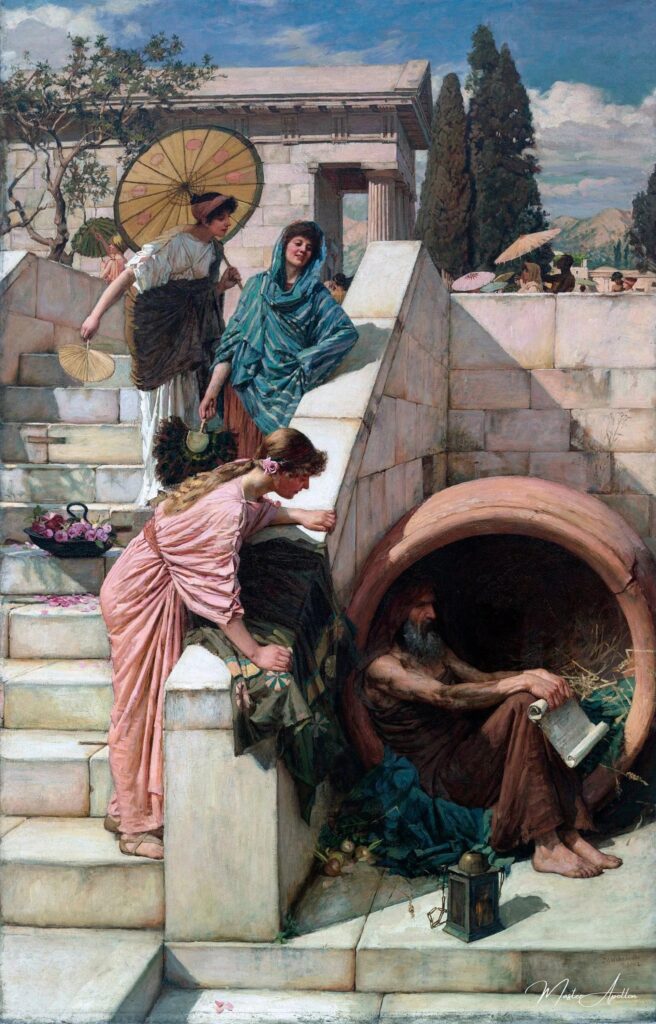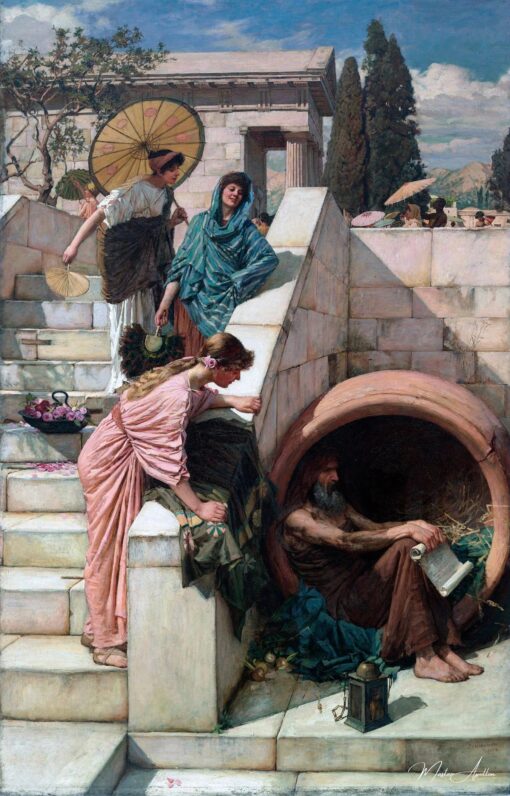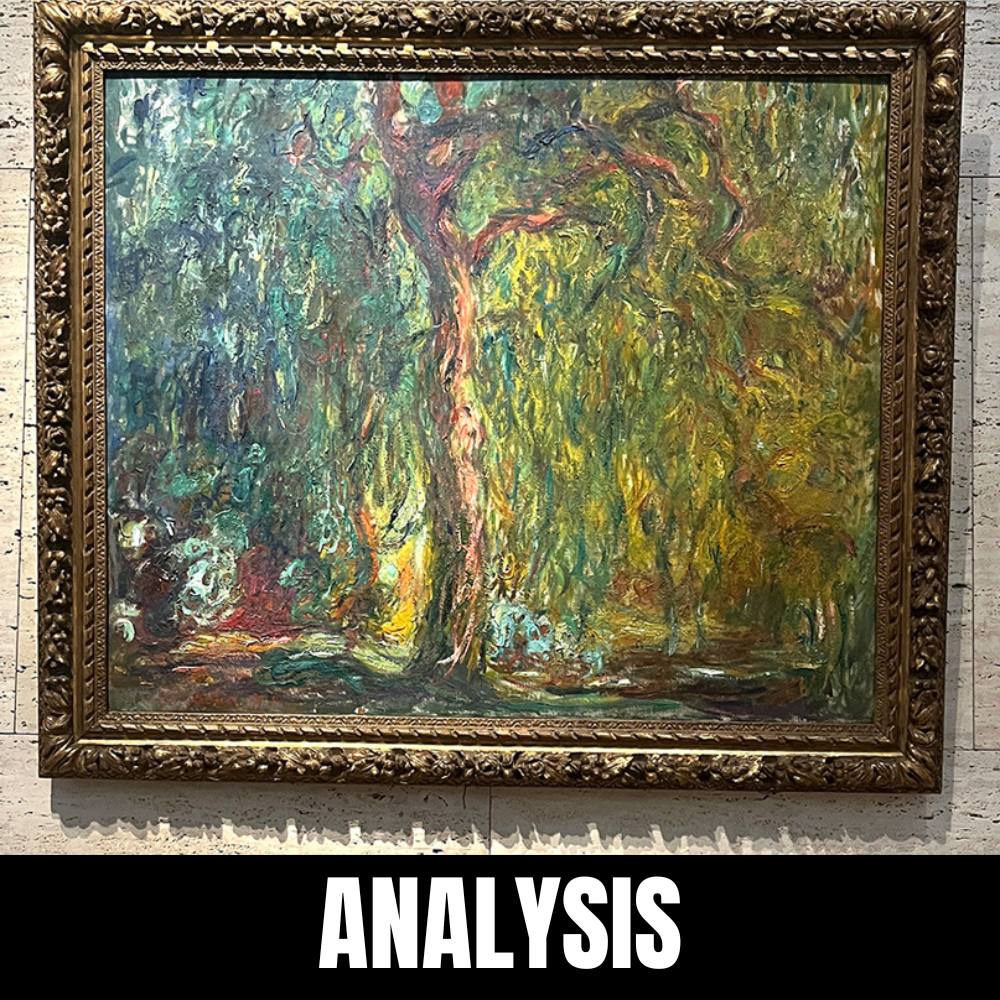Your cart is currently empty!

Diogenes – John William Waterhouse
Immerse yourself in the profound world of philosophy and artistry with this highest quality oil painting reproduction of “Diogenes” by John William Waterhouse. This stunning piece captures the very essence of the original artwork, showcasing exquisite detail and precision that breathe life into every brushstroke. Crafted with high-quality materials and expert craftsmanship, this reproduction re…
Diogenes – John William Waterhouse
John William Waterhouse’s Diogenes (circa 1890) is a striking representation of the ancient Greek philosopher Diogenes of Sinope, one of the most famous figures associated with the philosophical school of Cynicism. This painting by Waterhouse, known for its classical themes and mythological subjects, presents Diogenes in a moment of reflection and quiet rebellion, capturing the essence of his philosophy. In this blog, we’ll explore the background of Diogenes, the significance of the painting, and Waterhouse’s unique approach to depicting this iconoclastic figure.

The Historical Figure of Diogenes
Diogenes of Sinope was a philosopher known for his eccentric behavior and radical lifestyle, living in a barrel (or large jar) on the streets of Athens. He advocated for self-sufficiency, austerity, and the rejection of societal norms, particularly material wealth and social status. Diogenes famously used provocative actions to challenge the conventions of his time. One of the most well-known anecdotes about him involves his encounter with Alexander the Great. When Alexander offered to grant him any wish, Diogenes simply replied, “Yes, stand out of my sunlight.”
Diogenes’ life was a testament to his beliefs in living in accordance with nature, without reliance on luxury or superficial social structures. His disregard for material wealth and social norms made him both an influential philosopher and a figure of mockery in ancient Greece. In this painting, Waterhouse presents Diogenes not as a mere subject of ridicule but as a figure of contemplation, reflecting his philosophy and his unique place in history.
Waterhouse’s Depiction of Diogenes
In Diogenes, Waterhouse presents the philosopher in a moment of solitude, seated on the ground with his head tilted in thought. The simplicity of Diogenes’ surroundings reflects his philosophy of rejecting the excesses of civilization, while his posture suggests a quiet introspection. This portrayal emphasizes Diogenes’ inner life rather than his outward eccentricities, a departure from the more sensationalized accounts of his behavior in popular culture.
1. The Posture and Expression
Diogenes is depicted in a seated position, leaning slightly forward with his face partially obscured by his hand. This gesture suggests a moment of deep contemplation or perhaps a response to a challenging philosophical thought. His expression is one of quiet reflection, not of defiance or anger, but of serene independence. This portrayal diverges from typical representations of Diogenes as a more wild, untamed figure. Waterhouse’s Diogenes is composed and thoughtful, embodying the dignity of a philosopher who is at peace with his rejection of societal norms.
2. The Simplicity of the Setting
The setting of the painting is stark, with Diogenes sitting on a simple stone floor. This minimalist environment reinforces his ascetic lifestyle and belief in living without dependence on material things. The background, devoid of any grandeur or distractions, serves to focus the viewer’s attention entirely on Diogenes. It is a deliberate choice that reflects the essence of Diogenes’ philosophy: to live simply, without the need for external luxuries or comforts.
3. The Use of Light and Shadow
Waterhouse’s use of light and shadow in this painting is particularly notable. The light falling on Diogenes’ face highlights his facial features, lending an air of wisdom and clarity to his expression. The subtle play of light on his form contrasts with the darker, shadowed background, creating a sense of depth and introspection. The light seems to illuminate the philosopher’s mind, reinforcing the idea that Diogenes’ true wealth lies in his intellect and independence, rather than in material possessions.
Themes and Symbolism in Diogenes
1. Philosophical Rebellion
At the heart of Waterhouse’s Diogenes is the theme of philosophical rebellion. Diogenes was known for his disregard of the social and philosophical norms of his time, and his actions often challenged the very foundations of Greek society. In the painting, this theme is conveyed through the simplicity and isolation of Diogenes. He is not part of a larger social structure, nor does he seek fame or wealth. Instead, he exists as a solitary figure, removed from the superficialities of life. This speaks to his rejection of luxury and conventionality, favoring a life of intellectual freedom and self-sufficiency.
2. The Tension Between Society and Nature
Diogenes’ Cynicism was a philosophy that embraced living in accordance with nature, as opposed to the artificial constructs of society. Waterhouse’s depiction of Diogenes emphasizes this tension. The setting, which seems to separate the philosopher from the rest of society, highlights the division between the material world and the simpler, more genuine existence that Diogenes espoused. The bare stone floor and Diogenes’ humble clothing reinforce his belief that humans should be self-reliant, rejecting the need for external validation or material wealth.
3. The Silence of Contemplation
While many works of art emphasize action or dramatic moments, Diogenes by Waterhouse is a meditation on silence and introspection. Diogenes, in his rejection of the world, also rejects the need for external noise and distractions. In the painting, this is expressed through his quiet posture and the stillness of the environment. His hand to his face suggests that he is lost in thought, perhaps pondering the fundamental questions of existence or the nature of happiness. The silence of the painting echoes the silence that Diogenes may have sought in his own life—a silence free from the pressures of societal expectations.
Waterhouse’s Connection to Classical Themes
Waterhouse was known for his mastery of classical themes, often drawing on mythological and historical subjects. In Diogenes, he merges his love for the ancient world with his skill in capturing human emotion. The painting is rooted in classical philosophy, but it transcends the typical representation of Diogenes as a wild and eccentric figure. Instead, Waterhouse presents him as a reflective and dignified philosopher, one who embodies the essence of his teachings through his actions and appearance.
Waterhouse’s ability to humanize his subjects, even those from history or mythology, is evident in Diogenes. Rather than presenting Diogenes as an object of ridicule, Waterhouse elevates him to the level of intellectual and philosophical greatness. This approach aligns with Waterhouse’s tendency to portray his figures with dignity, whether they were mythological heroines or historical icons.
Conclusion
John William Waterhouse’s Diogenes is a profound and evocative painting that explores the themes of philosophical rebellion, simplicity, and self-sufficiency. Through his depiction of Diogenes as a figure of quiet contemplation, Waterhouse offers a nuanced interpretation of the Cynic philosopher, one that emphasizes the dignity and introspection inherent in his rejection of societal norms. The simplicity of the composition, the careful use of light, and the reflective mood of the painting all work together to portray Diogenes not just as a philosopher, but as a symbol of intellectual independence and the search for truth outside the bounds of society. This painting stands as a testament to Waterhouse’s ability to bring historical and philosophical figures to life in ways that are both respectful and deeply engaging.
John William Waterhouse
John William Waterhouse was a British painter known for his enchanting depictions of mythological and literary themes, characterized by rich colors, emotional depth, and a focus on female figures that often evoke a sense of longing and beauty.





Leave a Reply